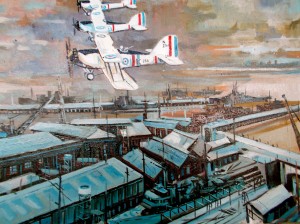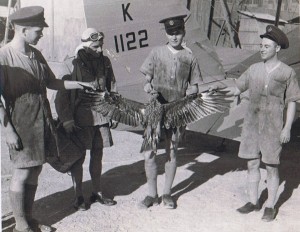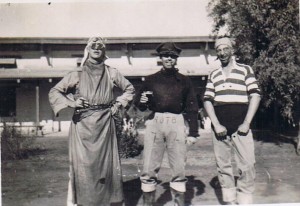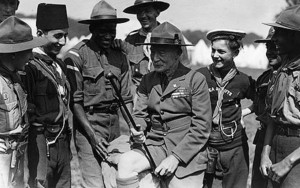Dear reader, if the light pouring out from the ‘P.M for Innovation’ is not bright enough, we give you another installment from Tales of Derring Do, when nothing was impossible and folk dreamed of the potentiality to do anything. And with pluck, perserverence and intestinal fortitude made it happen. Now we just use focus groups to guide middle management.
Wapiti’s over Williamstown Oil on Canvas signed 1940
The Westland Wapiti was absolutely the “greatest thing” in land based light bomber and torpedo aircraft when it was first trialled in 1928. With an upgraded Bristol Perseus sleeve-valve engine it developed upwards of 620 horsepower. It could fly at a sustained level at some fifteen thousand feet for up to eight hours, had a range of over 800 miles and could be re-fuelled and back in the air within minutes. It was also easy to service, partly constructed from surplus DH9A parts. The Wapiti held an irresistible appeal for a country short on manufacturing and technological expertise. It could be repaired or serviced by any qualified bush mechanic. In fact it was so versatile and the parts so interchangeable that a troop of boy scouts could be trained to service the aircraft. And in the dire days of the Great Depression two entire squadrons were requisitioned, repaired and serviced by none other than dedicated troops of boy scouts who were nicknamed ‘Baden’s, Fly Boys’, or the simple acronym, BPBB, or ‘Baden Powell’s Bum Boys’. ‘Bum-Boy’ being slang for refueller and general Technician.

Smudge Gudgeon proudly displays his prized Racing Vulture “Damocles” at the Intercolonial scouts Jamboree. Somers 1934.
Such was the success of the servicing of the Wapiti squadrons, and such the utilitarian nature of parts, that many boy scouts graduated to flying corps stage after having completed pervious training in gliders or fruit boxes converted to Wapiti scale. Boys were able to dis-assemble a Wapiti engine blind-folded within minutes and incredibly, with the aid of a pocket compass and a water diviner, were able to adjust the highly advanced instrumentation to the finest degree. In less than a few years the scouts had made refinements to the original air ministry specification and developed a series of hybrid Wapiti’s. The first the ‘Wapiti Watusi’, possessed through modified ailerons, a short take off and landing capability. In one highly publicised encounter a Wapiti Watusi piloted by Sixer, Smudge Gudgeon landed on a cricket pitch, alighted just in time to hit a six over the covers and win a match. In another celebrated occasion another Wapiti Watusi flew low enough against a strong headwind, to rescue the entire crew of an “Head of the River “ racing eight that had been sucked out the heads and into Bass Strait. And in another occasion, a highly modified Wapiti, nicknamed the ‘Tahiti Wapiti’, due to the raffia anti dust curtains adjacent the wheel spats delivered the first ever “Scouting for Boys” compendium to an isolated and ice bound scout troop stranded on a glacier on Mount Cook in New Zealand. Tragically, the majority of the scouts succumbed to exhaustion and perished. The sole remaining scout, appearing, well fed, used the compendium for cooking purposes and as a Queen’s Scout was elevated to the position of Chief Scout.

Scouts Patrol leader Lance ‘Spuddo’ Cornstalk and his companions hamming it up before the Williamstown excercise. Port Melbourne 1940.
This scene illustrates the fly-over of No 3 Wapiti squadron over Williamstown in the early months of World War Two. During the so called ‘Phoney War’, the Wapitis were modified to carry practise bombs. And in a so called mock attack on shipping at the Williamstown Dockyard, released their bombs upon the assembled vessels. Due to wartime austerity, the bombs were indeed surplus footballs donated by T.W Sherrin, manufacturers of league footballs. Unknown to the Wapiti crews, who filled them with nitro glycerine for effect, it was an unexpected surprise when the glycerine filled footballs bounced back from the decks of the surface ships. In what became the first ever reverse “Bounce bomb” fatality , all three aircraft were destroyed, and the Wapiti was retired form frontline service.
Only one remains and is kept by the Victorian Scouting movement as a courier plane to deliver new editions of ‘Scouting for Boys’ to new recruits in New Guinea, Fiji, Tonga and Thursday Island where top quality paper is still prized for its cooking potential and utility.


Another glorious page from the Imperial annals! Even in the far-flung reaches of the Empire, such as Australia, hardy young men of British stock showed their mettle in advancing the progress of heavier-than-air flight, thanks to their ingenious inventiveness and derring-do exploits.